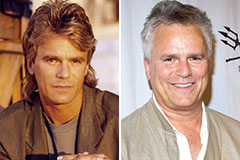The WWF Championship Belts hold a unique and storied area in the record of professional fumbling. Greater than simple accessories, these substantial symbols of victory stand for the peak of success, the conclusion of blood, sweat, and rips shed within the settled circle. For years, the view of a wrestler lifting a dazzling WWF (later copyright) championship belt over their head has been an famous image, quickly identifiable also to those with only a passing familiarity with the sporting activity. These belts are not simply rewards; they are physical indications of storylines, heritages, and the ever-evolving landscape of expert fumbling.
The history of WWF Champion Belts is as rich and vibrant as the firm itself. From the early days of the Globe Wide Fumbling Federation (WWWF) and its inaugural champion, the lineage of these titles informs a engaging story of wrestling's growth and makeover. The initial WWWF Champion, held by the fabulous Pal Rogers, was a reasonably simple layout, a unlike the sophisticated and commonly personalized belts these days. Yet, it laid the foundation for a custom of symbolic hardware that would pertain to specify battling quality.
As the WWWF transitioned right into the WWF under Vince McMahon Sr. and later on his child, Vince K. McMahon Jr., the championship belts advanced in tandem with the business's burgeoning popularity. The "Big Eagle" belt, associated with the Hulkamania age, ended up being an instantaneously identifiable symbol of fumbling's mainstream breakthrough in the 1980s. Its big, impressive eagle layout, usually draped over the wide shoulders of Hulk Hogan, epitomized the larger-than-life personalities and booming popularity of the moment. This era cemented the champion belt as a critical storytelling tool, a visual representation of dominance and the utmost prize that every wrestler desired attain.
The 1990s introduced a new age for the WWF, noted by a change in wrestling design and the introduction of brand-new superstars. This period also saw the introduction of brand-new WWF Champion Belts, reflecting the changing aesthetic and the characters holding them. The "Winged Eagle" belt, with its even more intricate layout featuring multiple plates and a popular winged eagle, ended up being the icon of champions like Bret Hart, Shawn Michaels, and Rock Cold Steve Austin. This style is often considered among one of the most renowned and beloved in wrestling background, representing a golden era for the business and its top title.
The Perspective Age, a period of edgier storylines and defiant personalities, brought with it even more development in the layout of the WWF Champion Belts. While the "Winged Eagle" continued to be for a while, the appearance of the "Smoking Skull" belt, particularly designed for Stone Cold Steve Austin, marked a separation from custom. This one-of-a-kind belt, including a head with smoke originating from its eye outlets, underscored the rebellious and anti-establishment identity of one of wrestling's largest celebrities. It showed the business's desire to customize the champion to fit the personality, further improving the storytelling potential of the title.
The turn of the millennium and the ultimate rebranding of the WWF to copyright saw additionally iterations of the championship belts. The "Undisputed Championship" period, complying with the acquisition of copyright, presented a brand-new design that merged the WWF and copyright World Heavyweight Championships. This belt, while at first representing a marriage, eventually gave way to the " Rewriter" belt, famously related to John Cena. This controversial layout, featuring a big copyright logo design that could rotate, was both admired and criticized for its showy and unconventional appearance. Regardless of point of view, it ended up being identified with Cena's leading regime and the era he defined.
Past the major world championship, the WWF Champion Belts incorporate a series of titles, each standing for a different level of accomplishment and specialization within the business. The Intercontinental Championship, often taken into consideration the "workhorse" title, has a lengthy and distinguished history, held by numerous future world champions. 1 Its different designs for many years have mirrored its relevance as a stepping rock to the centerpiece. Similarly, the USA Champion (initially a copyright title brought over after the purchase), the Tag Team Championships (with their countless and commonly visually distinct styles representing the unity of a team), the Female's Championships ( developing via various layouts reflecting the expanding prestige of females's wrestling), and the numerous "hardcore" and "European" titles ( however currently obsolete) all add to the abundant tapestry of WWF/copyright championship background.
1.
The respected background of the Intercontinental Championship: copyright, Aug. 12, 2022.
www.youtube.com.
The design and building of WWF Champion Belts are significant facets of their appeal. Commonly crafted from steel plates ( normally zinc or brass) and natural leather bands, these belts are tangible symbols of stature and craftsmanship. The elaborate detailing on home plates, featuring firm logo designs, eagles, worlds, and various other symbolic images, adds to their visual appeal and historical importance. The weight and feel of a championship belt are typically explained by wrestlers as adding to the feeling of achievement and authenticity associated with holding it.
The legacy of WWF Champion Belts extends much beyond the wrestling ring. They have actually ended up being cultural symbols, showing up in flicks, tv programs, and computer game. Replicas of these belts are extremely wwf championship belts sought after by followers, functioning as tangible tips of their favored wrestlers and remarkable ages. The image of a champion happily displaying their belt is deeply embedded in popular culture, standing for triumph and accomplishment in a broader feeling.
To conclude, the WWF Championship Belts are much more than just ornamental devices. They are potent signs of battling background, representing the victories and tribulations of many athletes who have actually strived for greatness within the squared circle. From the easy layouts of the early days to the fancy and personalized belts of the contemporary era, these titles have advanced along with the business, reflecting its changing landscape and the larger-than-life characters that have actually held them. The legacy of these belts remains to endure, exciting fans and solidifying their location as renowned icons of specialist wrestling quality.
 Michael Fishman Then & Now!
Michael Fishman Then & Now! Danny Pintauro Then & Now!
Danny Pintauro Then & Now! Elisabeth Shue Then & Now!
Elisabeth Shue Then & Now! Richard Dean Anderson Then & Now!
Richard Dean Anderson Then & Now! Rossy de Palma Then & Now!
Rossy de Palma Then & Now!